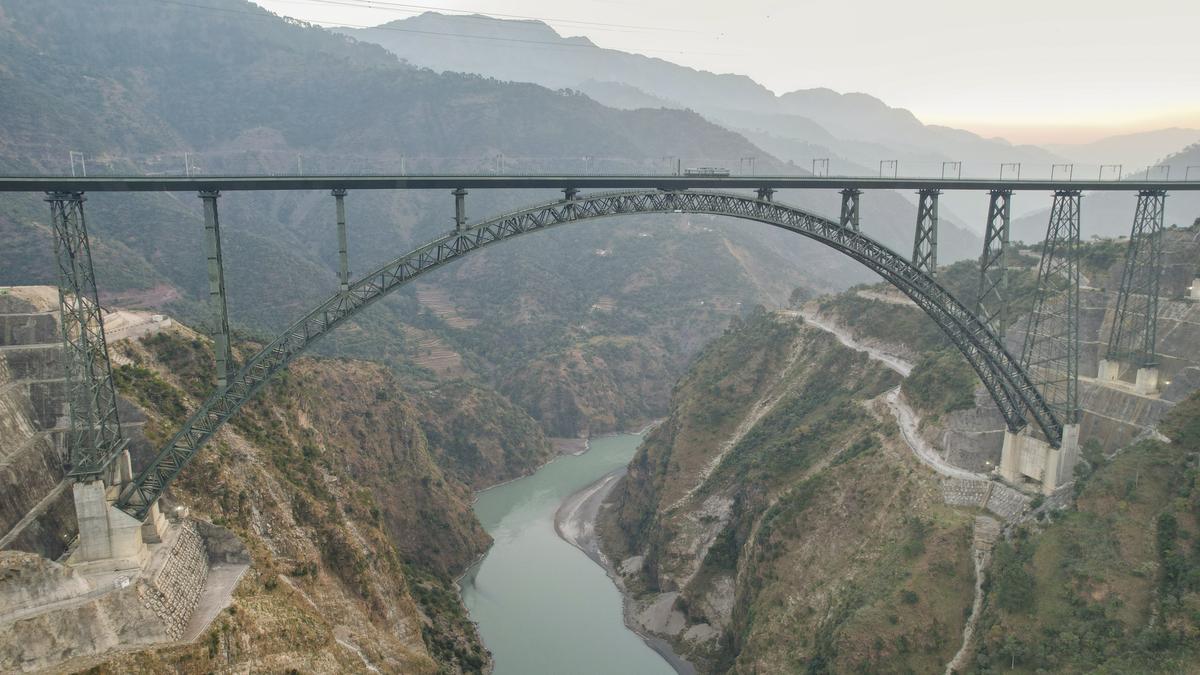The completion of the the Udhampur, Srinagar, Baramulla rail link project, or the Jammu–Baramulla line, nearly four decades in the making, marks not only a historic engineering achievement in one of the most formidable terrains on the planet, but also the quiet fulfilment of a long-standing promise between the Indian state and the people of Jammu and Kashmir. Spanning 272 km through the Pir Panjal and Himalayan ranges, this railway line is more than steel and concrete; it is a bridge of belonging.
Mobility equates to opportunity. The railway line connects places such as Sopore, Anantnag, Qazigund, and Banihal to the national economy. It brings markets closer, education within reach, and jobs within possibility. Each train narrows not just physical distance but also psychological gaps. This railway line fosters the sentiment that national integration is not merely about symbolism but practical access, investment, and shared development. In a region long marked by conflict, this railway line offers a quieter story — one of shared work, patience, and steady progress. It won’t resolve every issue, but it shifts the conversation towards connection and common purpose. The train carries the message that Kashmir is not peripheral to India, but central to its journey forward.
SPOTLIGHT | Building bridges to Kashmir
Audacity and achievement
This milestone would not have been possible without the undaunted spirit of India’s railway engineers. From the snow-bound tunnels of Pir Panjal to the vertiginous heights of the Chenab bridge, these professionals and workers toiled through some of the harshest natural conditions imaginable. They worked through deep winters, unpredictable landslides, and security concerns. Their courage and commitment deserve the gratitude of a nation.
The Indian Railways has a proud tradition of such resolve. In the 19th century, railway engineers built a railway through the treacherous Western Ghats and delivered the Bhor Ghat section that connects Mumbai with the Deccan. During the Assam rail-link project of 1948, when newly independent India faced a logistical crisis in connecting the Northeast, the legendary railway engineer Sardar Karnil Singh (later Chairman of the Railway Board) and his team built 200 kilometres of line in record time, including more than 300 bridges.
The Jammu-Baramulla line now joins this lineage of audacity and achievement. It is a reminder that while governments may change and priorities may shift, the railway engineer — anonymous and often unsung — continues to be one of the Republic’s most enduring architects. Their work does not merely connect places; it connects lives, aspirations, and identities. It is they who transform maps into meanings and blueprints into belonging.
The symbolism of the Jammu-Baramulla line lies not only in what it connects but also in what it overcomes. The project navigated not only geotechnical obstacles and climatic extremities, but also long periods of political uncertainty and civil unrest. Each completed tunnel and bridge, therefore, is an engineering feat and also a marker of perseverance and institutional commitment in the face of adversity.
EDITORIAL | Connecting bridge: On the Chenab Rail Bridge
Strategic importance
The line’s strategic importance is also worth underlining. By linking Kashmir’s northernmost railhead with the rest of India’s railway grid, it brings unparalleled logistical advantages for civilian mobility, trade, and even emergency response. The line also reduces dependence on the single Srinagar-Jammu national highway, which is vulnerable to landslides and closures during winter. In doing so, it enhances the resilience of Kashmir’s connectivity and helps ensure the regular flow of essentials such as food, fuel, and medicine.
For students and patients who earlier endured long road journeys over mountainous passes, the railway offers comfort, affordability, and dignity. It reduces both the cost and the emotional toll of separation, making it easier for families to stay connected. In time, it will also make the region more attractive to investors and institutions, opening the doors for industrial parks, skill development centres, and agro-logistics hubs to be developed in and around stations such as Anantnag, Awantipora, and Baramulla.
Culturally too, the railway becomes a conduit for exchange. As trains bring people to and from the Valley, they also carry stories, memories, and understanding. The rail journey is a slow but steady social equaliser, allowing a common experience to emerge across geographies. For many in the Valley who had never travelled far beyond their districts, it opens a new window to the rest of the country — and vice versa.
The future now depends on how we build around this backbone. The completion of the Jammu-Baramulla line must be followed by careful planning of last-mile linkages, station area development, and service frequency enhancement. Local entrepreneurs, women’s groups, and artisans must be enabled to benefit from the access that this line provides. Government agencies and private players must together create ecosystems around these stations, so they become not just halts, but hubs of rural transformation.
This project is a testament to what democratic development looks like in action — patient, deliberate, and deeply transformational. The tracks may be made of steel, but the promise they carry is one of trust. And that may be the most powerful foundation on which to build the future of Jammu and Kashmir.
Sarabjit Arjan Singh, former general manager, Indian Railway, and former member of Central Administrative Tribunal.
Published – August 04, 2025 12:41 am IST

